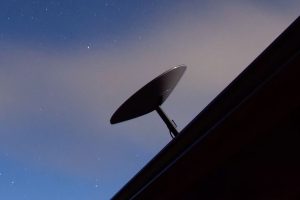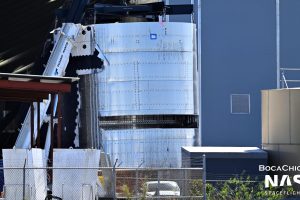- 🚀 A SpaceX engineer, Mike Coryell, actively deploys Starlink units in North Carolina for hurricane recovery.
- 🇺🇸 Over 1,000 Starlink units have been set up, improving communication for medical and emergency needs by tenfold.
- 🌐 The US FCC granted temporary authority for Starlink Cellular to support Hurricane Helene recovery efforts.
- 🏥 The enhanced communication infrastructure aids first responders, like fire departments and police, in providing immediate assistance.
Disaster recovery has always posed significant challenges, particularly in areas where communication infrastructures are severely damaged. Enter Starlink, an innovative solution provided by SpaceX, which recently played a pivotal role in North Carolina’s recovery efforts following Hurricane Helene. Spearheaded by SpaceX engineer Mike Coryell, this initiative highlights Starlink’s transformative potential in emergency scenarios.
The Power of Connectivity in a Crisis
When Hurricane Helene struck North Carolina, one of the critical challenges faced was the breakdown of communication networks. In disaster recovery, rapid information exchange is crucial. The ability to quickly communicate needs for medical attention, locate missing individuals, and coordinate emergency services can significantly impact the effectiveness of rescue and recovery operations. Here’s where Starlink steps into the spotlight.
What is Starlink?
Starlink is a satellite internet constellation constructed by SpaceX to provide satellite Internet access globally. The intent behind Starlink is to ensure connectivity even in the most remote or disaster-stricken areas where traditional communication infrastructures have failed. With over 1,000 Starlink units deployed in North Carolina, the results were nothing short of transformative.
Starlink’s Impact on Hurricane Helene Recovery
1. Deploying Starlink Units: Under the leadership of Mike Coryell, SpaceX successfully deployed more than 1,000 Starlink units across the devastated regions of North Carolina. Each unit not only facilitated internet connectivity but amplified communication capabilities by tenfold. This exponential increase in connectivity enabled:
- Rapid communication of medical emergencies and needs.
- Quick dissemination of information among rescue teams.
- Effective coordination between local and external aid organizations.
2. Federal Support through Temporary Authority: To ensure the effectiveness of these efforts, the US Federal Communications Commission (FCC) granted temporary authority for Starlink Cellular to offer coverage in North Carolina. This temporary authority was critical as it enabled uninterrupted and efficient communications, supporting on-ground recovery efforts despite traditional networks being down.
Enhanced Support for First Responders
First responders such as fire departments, police, and medical teams were able to leverage the enhanced communication infrastructure provided by Starlink. This connectivity allowed them to:
- Prioritize and address medical emergencies: First responders could reach patients faster, ensuring timely medical intervention.
- Coordinate rescue operations effectively: Teams could communicate in real time, making dynamic decisions to optimize recovery efforts.
- Facilitate immediate community relief: With reliable communication, authorities could better manage and deliver necessary supplies and assistance to affected communities.
Charting a New Course for Disaster Response
Starlink’s involvement in North Carolina underscores a broader shift in disaster recovery strategies. The integration of satellite internet into emergency management plans introduces several potential benefits:
- Scalability: Starlink’s rapid deployability makes it an ideal solution for varied scales of disasters, from localized emergencies to widespread calamities.
- Reliability: Unlike terrestrial communication infrastructures, which might be susceptible to physical damage, satellite-based internet remains robust in many scenarios.
- Inclusivity: With global coverage, Starlink can potentially bridge the connectivity gap in underserved or remote areas, offering a lifeline during crises.
Future Implications
The success observed in North Carolina may prompt government and emergency services worldwide to consider integrating satellite internet solutions like Starlink into their disaster preparedness and response plans. While regulatory frameworks will need adaptation, the potential upsides of enhanced connectivity are undeniable.
In the years to come, technology will continue to play a pivotal role in shaping the landscape of disaster response. Through initiatives like Starlink, communities can look forward to more resilient recovery strategies, where effective communication can dramatically improve outcomes and save lives.





